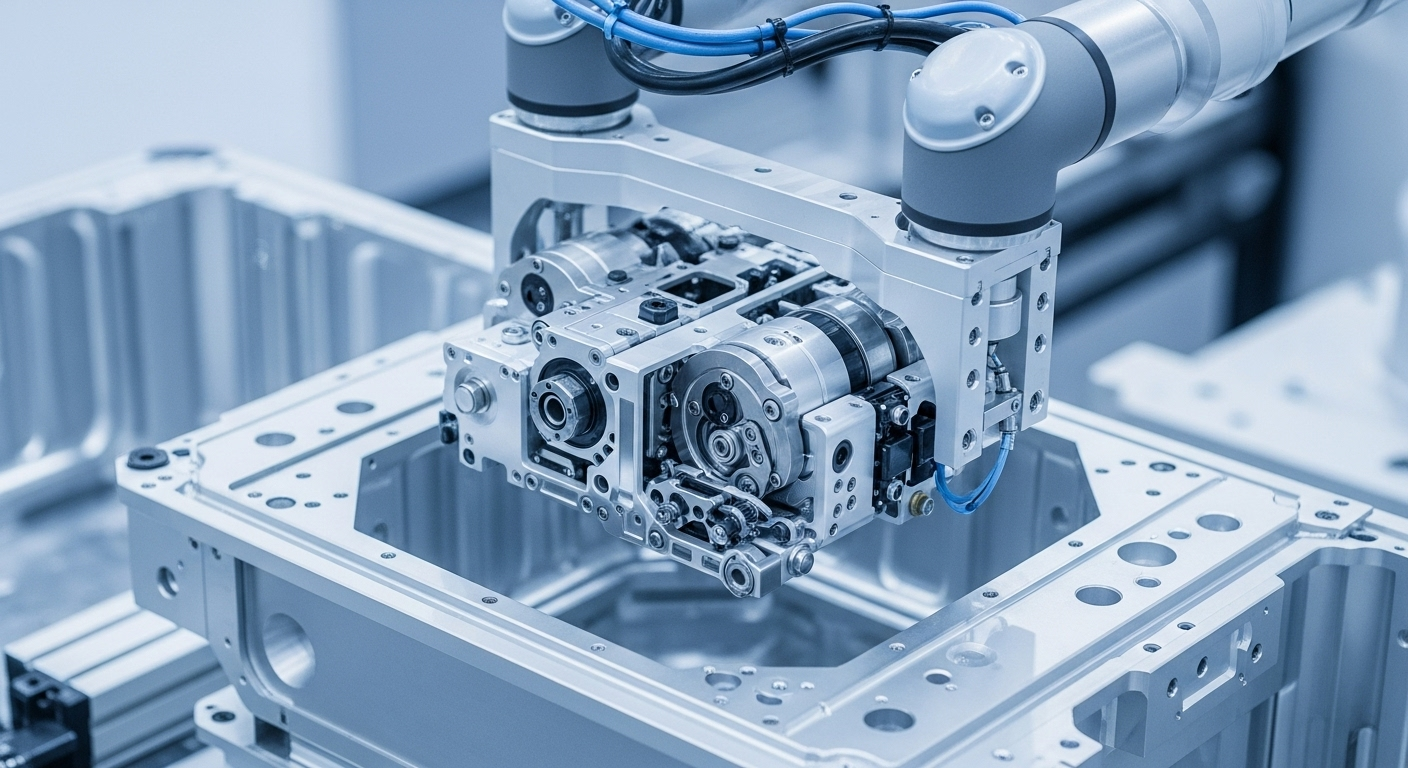Precision Modularity: Reinventing Industrial Design
In today's rapidly evolving industrial landscape, a revolutionary approach to product design and manufacturing is gaining traction. Precision modularity, a concept that combines advanced engineering principles with flexible production methods, is reshaping how industries conceptualize, create, and deliver products. This innovative strategy not only streamlines manufacturing processes but also opens up new possibilities for customization, sustainability, and market responsiveness.

The Genesis of Precision Modularity
Precision modularity finds its roots in the convergence of several industrial trends. The push for mass customization, the need for agile manufacturing processes, and advancements in computer-aided design and manufacturing (CAD/CAM) technologies have all contributed to its development. Unlike traditional modular designs, which often sacrificed performance for flexibility, precision modularity maintains high standards of quality and functionality while offering the benefits of a modular approach.
The concept gained initial traction in industries like automotive and electronics, where the complexity of products and the demand for customization were particularly high. Companies like Volkswagen and Nissan pioneered the use of modular platforms in vehicle design, allowing for the creation of multiple models from a single base architecture. This approach not only reduced development costs but also improved manufacturing efficiency and product quality.
Key Principles of Precision Modularity
At its core, precision modularity is built on several key principles that set it apart from traditional design and manufacturing approaches:
-
Standardized Interfaces: Modules are designed with standardized connection points, ensuring seamless integration regardless of the specific configuration.
-
Functional Independence: Each module is engineered to perform its function independently, minimizing interdependencies and simplifying troubleshooting and maintenance.
-
Scalability: The modular design allows for easy scaling of products, from simple configurations to complex systems, without requiring a complete redesign.
-
Precision Engineering: Advanced manufacturing techniques ensure tight tolerances and high-quality outputs, maintaining performance standards across different configurations.
-
Design for Disassembly: Modules are created with ease of assembly and disassembly in mind, facilitating maintenance, upgrades, and end-of-life recycling.
Implementing Precision Modularity in Manufacturing
The transition to precision modularity requires a significant shift in both design philosophy and manufacturing processes. Companies must invest in advanced CAD systems that can handle complex modular designs and simulate various configurations. Production lines need to be reconfigured to accommodate the assembly of different modules, often incorporating flexible automation systems and advanced robotics.
One of the key challenges in implementing precision modularity is maintaining quality control across a wide range of possible configurations. This necessitates the development of sophisticated testing protocols and quality assurance measures that can adapt to different product variations. Additionally, supply chain management becomes more complex, as manufacturers must balance the need for a diverse inventory of modules with the desire to minimize stock levels.
The Impact on Product Development and Innovation
Precision modularity has a profound impact on the product development cycle. By allowing for rapid prototyping and iterative design, it significantly reduces the time and cost associated with bringing new products to market. This agility enables companies to respond more quickly to market trends and consumer preferences, potentially gaining a competitive edge in fast-moving industries.
Moreover, the modular approach facilitates continuous improvement and innovation. Individual modules can be upgraded or replaced without necessitating a complete product redesign, allowing for incremental enhancements that extend product lifecycles and improve customer satisfaction. This aspect of precision modularity aligns well with the growing emphasis on sustainability and product longevity in many industries.
Challenges and Considerations
While precision modularity offers numerous benefits, it also presents several challenges that companies must address:
-
Initial Investment: The transition to a modular design and manufacturing approach often requires significant upfront investment in technology, training, and infrastructure.
-
Complexity Management: Managing the increased complexity of modular designs and their various configurations can be challenging, requiring sophisticated PLM (Product Lifecycle Management) systems.
-
Balancing Standardization and Customization: Finding the right balance between standardized modules and the ability to offer customized products is crucial for success.
-
Supply Chain Adaptation: Suppliers need to adapt to the new modular approach, potentially requiring changes in their own production processes and inventory management.
-
Organizational Change: Implementing precision modularity often necessitates changes in organizational structure and processes, which can face resistance from employees accustomed to traditional methods.
Precision Modularity: Practical Insights
-
Conduct a thorough cost-benefit analysis before transitioning to precision modularity, considering both short-term investments and long-term gains.
-
Start with a pilot project in a specific product line to test and refine the modular approach before full-scale implementation.
-
Invest in employee training and change management programs to ensure smooth adoption of new design and manufacturing processes.
-
Develop a robust PLM system to manage the complexity of modular designs and their various configurations.
-
Collaborate closely with suppliers to align their processes with the modular approach and ensure a seamless supply chain.
In conclusion, precision modularity represents a significant advancement in industrial design and manufacturing. By offering increased flexibility, efficiency, and responsiveness to market demands, it has the potential to revolutionize how products are conceived, produced, and maintained. As industries continue to evolve in the face of technological advancements and changing consumer expectations, precision modularity provides a powerful framework for innovation and sustainable growth. Companies that successfully implement this approach stand to gain a significant competitive advantage in the increasingly complex and dynamic global marketplace.





